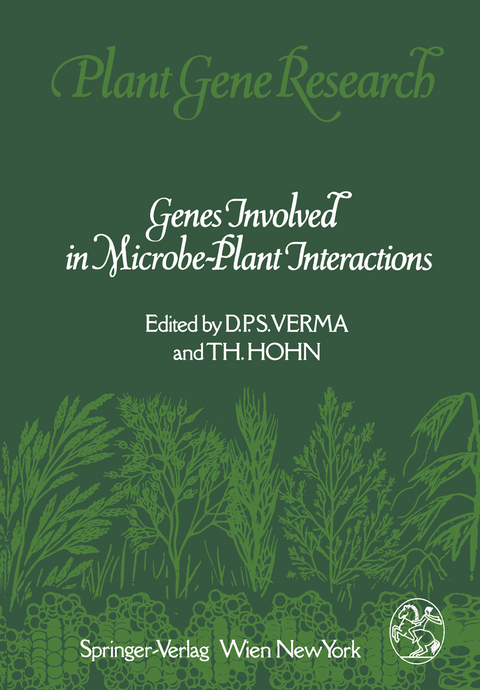
Genes Involved in Microbe-Plant Interactions
Springer Wien (Verlag)
978-3-7091-8741-8 (ISBN)
Section I. Recognition.- 1 Host Specificity in Rhizobium-Legume Interactions.- 2 Interaction of Agrobacterium tumefaciens with the Plant Cell Surface.- Section II. Symbiosis.- 3 Legume-Rhizobium-Symbiosis: Host's Point of View.- 4 Rhizobium-Leguminosae Symbiosis: The Bacterial Point of View.- 5 Nitrogen Assimilation in the Legume-Rhizobium Symbiosis: A Joint Endeavour.- 6 Hydrogenase and Energy Efficiency in Nitrogen Fixing Symbionts.- 7 Symbiotic Relationships in Actinorhizae.- 8 Host-Fungus Specificity, Recognition and Compatibility in Mycorrhizae.- 9 Molecular Biology of Stem Nodulation.- Section III. Plant Tumor Induction.- 10 Induction of Cell Proliferation by Agrobacterium tumefaciens and A. Rhizogenes: A Parasite's Point of View.- 11 Gene Organization of the Ti-Plasmid.- 12 Phytohormone-Mediated Tumorigenesis by Plant Pathogenic Bacteria.- Section IV. Plant Pathogens and Defence Mechanisms.- 13 Genetic and Biochemical Basis of Virulence in Plant Pathogens.- 14 Defense Responses of Plants.
| Erscheint lt. Verlag | 19.1.2012 |
|---|---|
| Reihe/Serie | Plant Gene Research |
| Zusatzinfo | XIV, 394 p. |
| Verlagsort | Vienna |
| Sprache | englisch |
| Maße | 170 x 244 mm |
| Gewicht | 700 g |
| Themenwelt | Naturwissenschaften ► Biologie ► Mikrobiologie / Immunologie |
| Naturwissenschaften ► Biologie ► Zellbiologie | |
| Schlagworte | genes • Interactions • microbe |
| ISBN-10 | 3-7091-8741-9 / 3709187419 |
| ISBN-13 | 978-3-7091-8741-8 / 9783709187418 |
| Zustand | Neuware |
| Informationen gemäß Produktsicherheitsverordnung (GPSR) | |
| Haben Sie eine Frage zum Produkt? |
aus dem Bereich


